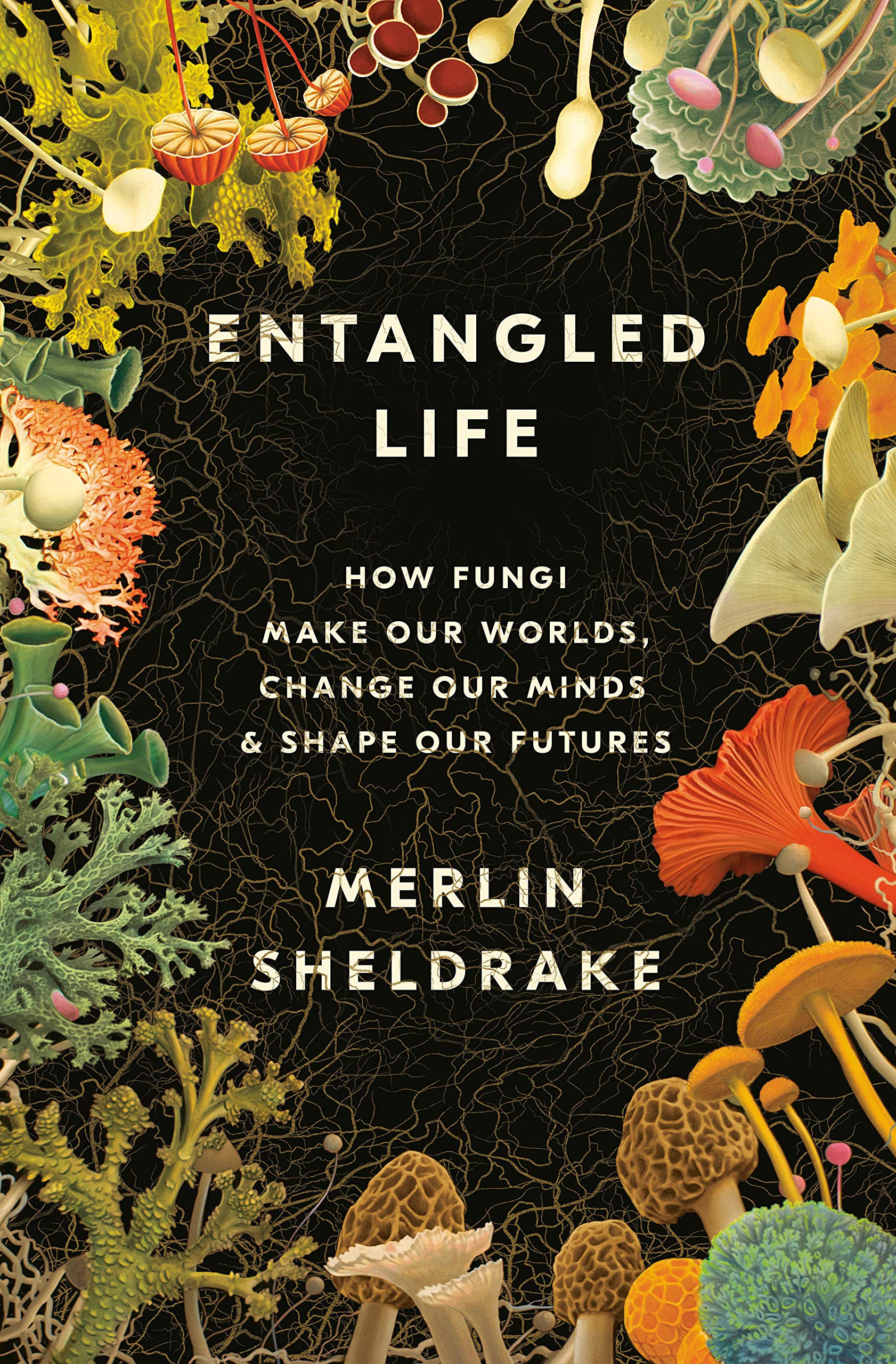A fascinating book about fungi: how they live, their relationship with other organisms (including ourselves) and how, despite being small individually, collectively they have a major influence on the ecosystems of the world. You'll get to appreciate fungi and what researchers have been discovering about their lives. But much still remains unknown about fungi.
Chapter one looks at how fungi senses and affects it surrounds via chemical signals, or smells. Using truffles as the main example, fungi are shown to be able to trigger an animal's sense of smell when the truffle wants to be eaten, so it can reproduce. Fungi also use chemical signals to hunt for prey (nematode worms for example), to detect other fungi in the area to determine if they are friend or foe, and to reproduce by finding another compatible fungus. Chemical signals are also used by fungi and plants to sense each other and to determine whether they should enter into a mutual living relationship.
Chapter two takes a closer look at how fungi makes sense of its world. Through observations and experiments, fungi are found to be able to solve networking problems (like navigating a maze) just like slime moulds (which are not fungi). By various unknown means, fungi can sense the direction of food (or other sensations) and modify their network organization based on some way to make a collective decision. The way this is done may be chemical signals, hydraulic pressure or even electrical impulses, but much research remains to be done to learn just how fungi make 'decision' or have the equivalent of a 'brain' to process environmental signals.
Chapter three looks at enigmatic lichen, which are organisms that are a combination of fungi and photosynthesizing organism. Originally thought to be fungi that had 'enslaved' algae, they are now recognized to be an organism that is made of mutually dependent parts (symbiosis). Lichens are found in all kinds of environments and even survive exposed to outer space by producing protective tissue and chemicals (some of which are used by humans). Research has now shown that lichens can form from many kinds of fungi and organisms, and consists of more than one fungus and other organisms. Much remains unknown about lichens, which are the first living things to colonize new environments and, possibly, other worlds.
Chapter four looks at the mind-altering and animal controlling abilities of fungus. Much remains unknown about how certain fungus can control the body of animals (like ants and other insects) to make them behave in ways to help spread the spore of fungus. On humans, 'magic mushrooms' (which produce psilocybin and other psychedelics) have long fascinated people with their ability to alter the mental states of people. One puzzle is why fungi produce such psychedelics and why they affect people.
Chapter five looks at the relationship between fungi and plants. When plants move on to land (as algae), it was fungi that served the purpose of roots to extract nutrients from the ground. Even today, this relationship between fungi and trees (which now have roots) still holds, with fungi extracting ground nutrients for trees, while trees provide energy (from photosynthesis) to fungi. This relationship still holds many puzzles that researchers are struggling to understand, like the ability of different fungi to affect plant growth depending on their relationships.
Chapter six expands on the previous chapter to look at the relationships between fungi and groups of trees, under the name of Wood Wide Web (based on the World Wide Web that rose out of the internet). The author points out that the name, Wood Wide Web, itself misunderstands the network relationship between fungi and trees, as trees are not the 'masters' of this network, as trees and fungi allow the exchange of nutrients and 'messages' among themselves, affecting the growth of the entire network as well as its behaviour as the environment changes.
Chapter seven looks at the way fungus is changing the world. Fungi are able to digest and break down numerous substances from wood to synthetic materials (like plastic, nappies and cigarette butts), leading to possible new ways to recycle and decompose human wastes. But fungi can also be used as substitutes for other materials (like leather and foam) as well as help to repair ecosystems by removing toxic substances and possibly help bees by helping to eliminate the mites that are causing commercial bee colonies to collapse.
Chapter eight looks at our relationship with fungus, a relationship that goes back in time to when humans first began to be able to consume alcohol from fermented fruit (generated by yeasts). Yeast would be cultivated and domesticated to produce other foods (like bread), although the author makes a case for humanity being domesticated by yeasts (to help spread its spores).



